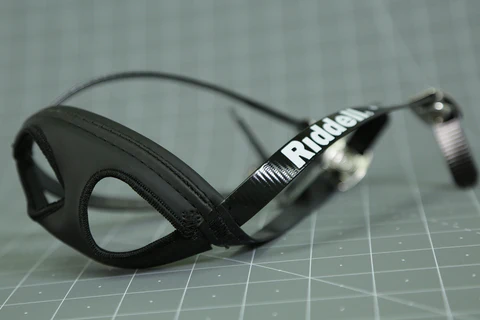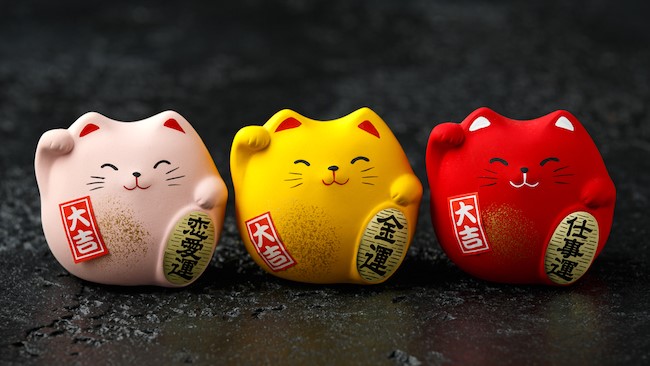Chin straps might seem like a simple accessory, but their proper fit can make a big difference in both safety and comfort. Whether you’re using a chin strap with a motorcycle helmet, CPAP mask, sports gear, or even as part of post-surgical recovery, understanding how to adjust and wear your chin strap correctly is crucial. In this guide, we break down everything you need to know—from the principles behind the fit to step-by-step instructions for adjusting your strap.
Why the Right Fit Matters
A chin strap’s primary function is to secure a device, like a helmet or mask, ensuring that it stays in place during use. This not only enhances performance but also maximizes safety. A properly fitted chin strap can prevent accidents, reduce discomfort, and even help with medical treatments. For example, in CPAP therapy for sleep apnea, a well-adjusted chin strap helps keep the mouth closed, reducing air leaks and preventing dry mouth.
In sports and recreational activities, such as cycling or motorcycling, the chin strap plays a vital role. It keeps the helmet securely in place, ensuring that it absorbs impact properly during an accident. Similarly, after a cosmetic or reconstructive procedure, chin straps can help reduce swelling and support tissue recovery. In every scenario, the key is to achieve a balance: the strap must be snug enough to hold securely yet loose enough to avoid causing undue pressure or discomfort.
General Principles for a Properly Fitted Chin Strap
Regardless of its use, several general principles apply when fitting any chin strap:
-
Snug but Not Constricting: The strap should provide firm support without pinching or restricting movement. In many cases, you should be able to slide one or two fingers comfortably between the strap and your skin. For instance, motorcycle helmet guidelines often suggest checking that one or two fingers can fit under the strap.
-
Correct Positioning: The chin strap should sit securely under your chin, with the curved or padded portion fitting naturally against your jawline. Ensure that it doesn’t interfere with your breathing, speaking, or any natural facial movement.
-
Material Matters: Most chin straps are made from materials like neoprene, soft latex-free fabrics, or padded cloth. These materials are chosen for their durability and comfort. Look for a strap with moisture-wicking or hypoallergenic properties if you plan to wear it for long periods.
-
Adjustability: The ability to adjust the length and tension of your chin strap is crucial. Adjustable straps often come with Velcro or buckle systems, allowing you to fine-tune the fit based on your facial structure or the type of device you are using.
Step-by-Step Guide to Fitting a Chin Strap
The process of fitting a chin strap may vary slightly depending on its application. Below are some general steps you can follow:
1. Determine Your Required Size
Before even putting the strap on, know your measurements or try different sizes if available. For CPAP chin straps, for instance, many manufacturers provide sizing guides. If you’re using a chin strap for a helmet, refer to the helmet’s manual, as many models come with a recommended chin strap length.
2. Position the Chin Strap Correctly
- For Helmet Use: Place the chin strap so that the curved or padded edge sits right under your chin. The strap should extend upward, covering the jawline without interfering with your ears.
- For CPAP or Medical Devices: Place the strap over your head, ensuring that it sits comfortably on your forehead and around the back of your head before it comes down to secure your chin.
- For Post-Surgical Recovery: Follow your surgeon’s instructions carefully. Typically, the strap should be positioned so that it supports the healing tissue without adding excess pressure to sensitive areas.
3. Adjust the Tension
Slowly tighten the chin strap while paying attention to how it feels. The ideal tightness should:
- Keep the device (helmet, mask, etc.) securely in place.
- Allow a comfortable gap of about one to two fingers between the strap and your skin.
- Avoid causing redness, pinching, or discomfort.
For instance, if you’re adjusting a motorcycle helmet chin strap, start with a moderate setting and then gradually tighten it until you reach the point where only a finger’s width of space remains. This adjustment ensures that your helmet stays securely fastened without causing pain or restricting circulation.
4. Check the Fit with Movement
Once you have adjusted the strap, move your head and facial muscles. If the strap remains in place and doesn’t shift or cause discomfort during speaking or chewing, you’ve likely found the right fit. If you feel any looseness or experience discomfort, readjust accordingly.
5. Secure All Adjustments
If your chin strap features adjustable clips, Velcro, or buckles, ensure they are fastened securely. This step is particularly important in active environments, such as riding a motorcycle or participating in sports, where constant movement could cause the strap to shift.
Specific Tips for Different Applications
Motorcycle Helmet Chin Straps
For motorcyclists, safety is paramount. A poorly fitted helmet can compromise protection in the event of an accident. Follow these tips:
- Double-Check the Fit: After putting on your helmet, look in a mirror to confirm that the chin strap is evenly positioned and not twisted.
- One-to-Two Finger Rule: Adjust the strap until you can slide one or two fingers between it and your chin. This ensures a secure fit without excessive tightness.
- Periodic Rechecks: As you ride, especially on long trips, occasionally check that your helmet and chin strap haven’t shifted due to sweat or movement.
CPAP Therapy Chin Straps
For those using chin straps in CPAP therapy, comfort is directly linked to treatment efficacy. Consider the following:
- Comfort is Key: The strap should be gentle enough to encourage a full night’s sleep while ensuring that the mask remains secure.
- Material Sensitivity: Choose a strap made of soft, hypoallergenic material to minimize irritation, especially if you have sensitive skin.
- Follow Manufacturer Instructions: Many CPAP chin straps come with specific fitting instructions. Following these guidelines can help prevent air leaks and maximize the benefits of your therapy.
Post-Surgical Chin Straps
After procedures like facelifts, the proper tension of a chin strap can aid healing. Here’s how to approach it:
- Consult Your Surgeon: Always adhere to the specific instructions provided by your healthcare provider regarding how tight the strap should be.
- Gradual Adjustment: Your surgeon may advise that the strap be worn tightly during the initial recovery phase and then gradually loosened as swelling subsides.
- Monitor for Discomfort: Ensure that the strap is not causing additional pain or interfering with circulation. Any signs of discomfort should be reported to your doctor immediately.
Troubleshooting Common Issues
Even with careful adjustment, you might run into a few common issues:
- Excessive Pressure: If you experience headaches, redness, or soreness along your jaw, the strap might be too tight. Loosen it slightly and recheck the fit.
- Slippage: Conversely, if the strap shifts while you move or falls off entirely, it may be too loose. In this case, adjust the tension or consider a different style with a better grip.
- Irritation or Skin Rashes: Continuous friction or moisture can cause skin irritation. Choose straps made from breathable, hypoallergenic materials and wash them regularly according to the manufacturer’s instructions.
Maintenance and Care
Taking care of your chin strap is just as important as ensuring the right fit. Regular cleaning can prevent irritation, extend the life of the strap, and maintain its effectiveness.
- Follow Cleaning Instructions: Always check the manufacturer’s guidelines for cleaning. Some straps are machine-washable, while others require hand washing.
- Inspect for Wear and Tear: Regularly check the strap for signs of fraying, loss of elasticity, or damaged fasteners. Replace the strap if you notice any deterioration.
- Store Properly: When not in use, store your chin strap in a clean, dry place away from direct sunlight. This practice helps maintain the integrity of the materials.
Final Thoughts
Fitting a chin strap properly is an essential step for ensuring both safety and comfort—whether you’re riding a motorcycle, using CPAP therapy, or recovering from surgery. By following these steps, you can achieve a secure, comfortable fit that enhances the effectiveness of your gear or treatment while minimizing the risk of discomfort or injury.
Remember that the key is balance. The strap should be firm enough to hold everything in place yet flexible enough to allow natural movement and prevent pressure points. Regularly reassess your fit and make adjustments as necessary. And when in doubt, refer to product-specific guidelines or consult a professional for personalized advice.
A properly fitted chin strap isn’t just an accessory—it’s an integral part of your overall safety and comfort strategy. Invest the time to get it right, and you’ll reap the benefits in every aspect of your daily routine.




